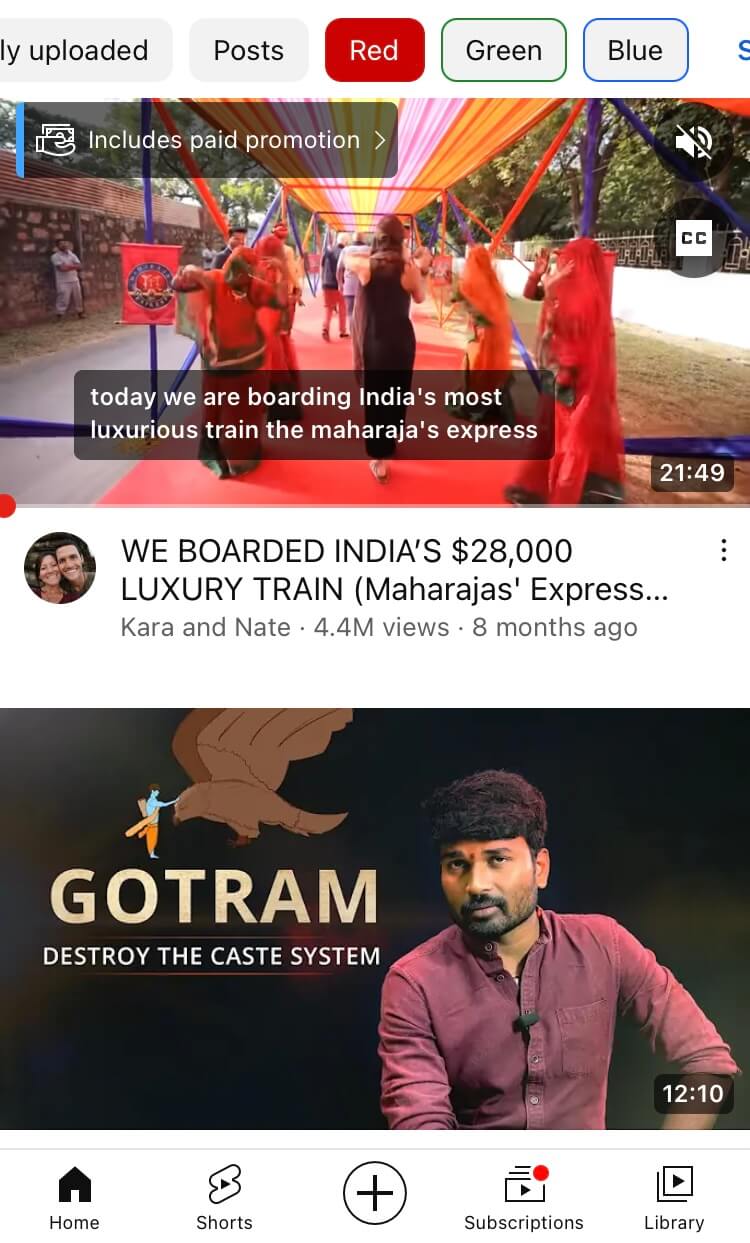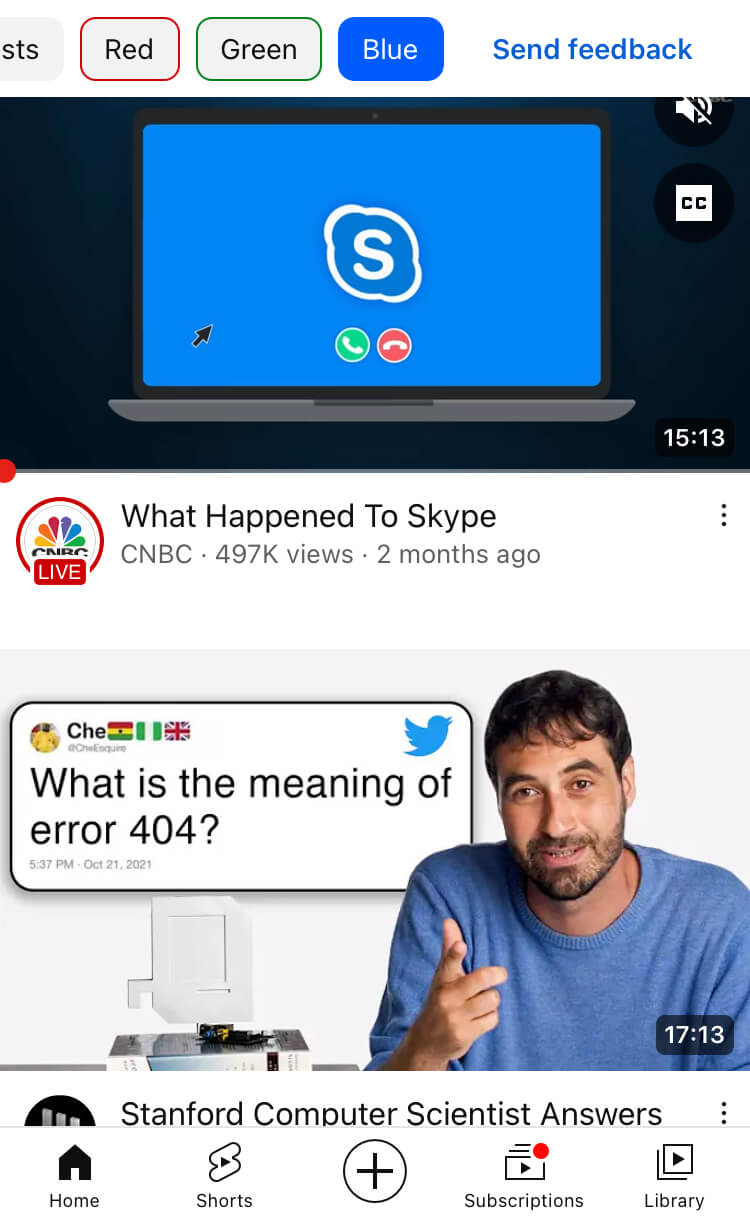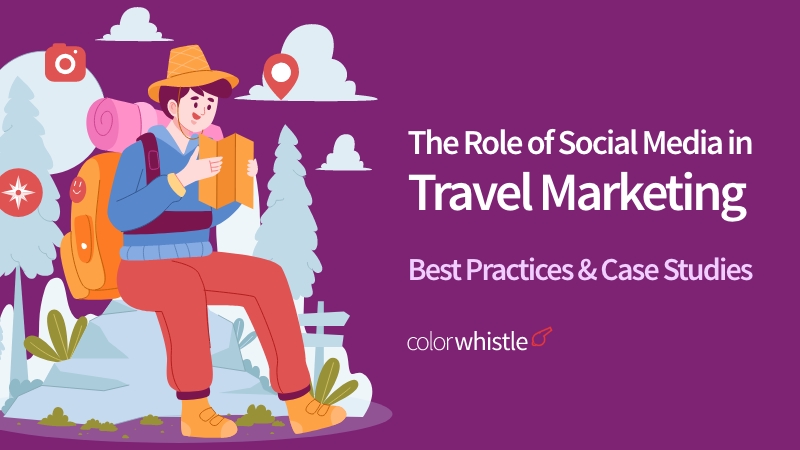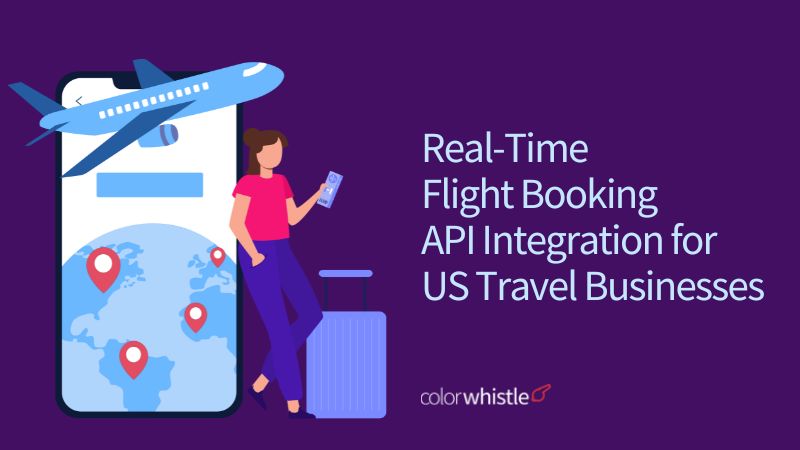Back in 2016, then Marriott’s chief global marketing officer, Karin Timpone spoke to CNBC about their social media travel marketing service and incorporation of geo-fencing technology.
If someone posts a photo from one of its properties, her team will reach out and contact the front desk to let them know. The hotel will often then reach out to the customers and offer complimentary upgrades — something to show that Marriott values their presence.
Earlier, a music video for “I’ll Show You” featuring Justin Bieber at the Fjadrárgljúfur canyon in Iceland. A few years later, tourism to this once-quiet town nearly doubled. The video on YouTube has over 500 million views since 2015.
Given the general rise in income levels and jobs going remote, people find more time to take frequent travel breaks, showcasing the need for effective digital marketing services to tap into the growing travel market
And social media has only accentuated this trend,
- By hosting engaging travel content and motivating reviews
- By increasing travel FOMO (Fear-Of-Missing-Out)
- By minimizing unpleasant surprises at the destination
Given the scope of social media in travel marketing services, this blog discusses best practices followed by interesting case studies for inspiration.
The Power of Social Media in Travel Marketing
- Expedia’s 2023 Traveler Value Index noted almost 35% of travelers turn to social media for holiday inspiration.
- Furthermore, 75% of respondents chose a specific destination inspired by social media as per Amex’s 2023 Global Travel Trends Report.
- Travel Live Streaming is becoming increasingly popular on social media, with 60% of travelers saying they have watched a live stream of a travel experience.
- 74% of travelers use social media while traveling, while 92% of consumers trust word of mouth and UGC more than other forms of advertising, thus making UGC on social media crucial for any travel marketing campaign.
Best Practices for Successful Social Media Travel Marketing
Top 5 things travelers use social media to research – Destinations, Hotels, Activities, Attractions, and Restaurants. Let’s list out travel marketing best practices to get the most attention from social media users.
- Choosing the Right Platforms
- Creating Engaging Content
- Building a Consistent Brand Presence
- Utilizing Paid Advertising
- Monitoring and Analytics
Choosing the Right Platforms
Identify the social media platforms that align with your target audience.
Popular Vacation Inspiration Social Platform
Demographics
Media Type
Millennials, GenZ
Highly visual
Boomers, Millennials
Moderately visual
TripAdvisor
Millennials
User Generated Content
Millennials
Extremely visual
YouTube
Boomers, Millennials, GenZ
Detailed & Informative
B2B travel marketing
Detailed & Informative
Take a que from social media strategy of Marriott Hotels. Their Instagram account features stunning photos of their hotels, while their Twitter account is more focused on sharing news and updates.
Also Read
Creating Engaging Content
Invest in high-quality, visually appealing content, including photos and videos. Use storytelling techniques to capture the essence of your travel experiences.
Encourage user-generated content (UGC) by running contests or using branded hashtags. UGC refers to any content that is created and shared by users or consumers of a product, service, or brand rather than by the company or organization itself.
Travel marketers can leverage UGC in the following way:
- Display UGC on their social channels to engage other users as it signals authenticity.
- Monitoring UGC can become your informal market research to upgrade your services in-time.
- UGC also helps build employer brand which results in team retention.
Furthermore, you may leverage the new YouTube app feature that lists video recommendations according to thumbnail color. As a travel marketer, you can explore more such strategies to increase views on YouTube here.



Highlight safety measures and sustainable practices in your travel marketing, as these have become critical concerns for travelers post-pandemic.
Take inspiration from our previous blog where we have discussed Innovative Travel Marketing Campaigns From Around The World.
In a bid to blindly replicate brand marketing successes on social media, many end up creating “self-congratulating” content.
Recreating trendy content give a false impression to the marketing team about better reach. The truth beholds, unless original thought is put to market product/service, the social media marketing will lead to poor brand awareness, let alone lead generation.
Also Read
Building a Consistent Brand Presence
Consistency is Key. Develop a content calendar to maintain a consistent posting schedule. Consistency helps keep your audience engaged and informed.
Share travel stories, itineraries, and personal experiences. Storytelling creates a deeper connection with your audience. Use live streaming feature to promote your brand often. Learn more tips on travel live streaming here.
You can use hashtag strategy to expand your content’s reach. Create a branded hashtag for your campaigns and encourage followers to use it.
However, we feel social media hashtags are overused. Hashtags are annoying and they hijack conversations. Moreover, users may relate social media posts with many hashtags as spam.
Here is an interesting blog by Hannah Macready where she discusses the best use of hashtags for your social media campaigns in 2024 and beyond.
Also Read
Utilizing Paid Advertising
Partner with social media influencers who align with your brand and target audience. Influencers can provide authentic recommendations and reach new followers.
Look for long-term association with the right content creator on social media for consistent engagement of new and existing users. Influencer marketing tools like Ylytics, HypeAuditor, and others can help you find the right social media influencers.
How Travel Marketers Want People to Search on Google?

Enter a search query -> Your brand website ad appears -> Book your services
But How Do People Actually Search?
Enter a search query -> Google analyzes and displays results per keyword -> Visitor clicks -> Interrupted by WhatsApp chat -> Sleeps.
… a week later…
Notices a display ad from your brand -> Visits the landing page -> Bookmarks it -> Checks out the brand profile on Instagram -> Share it with spouse -> Logs out
… 2 days later in the office…
Visits your site -> Confirm their bookings.
Use paid advertising options on platforms like Facebook and Instagram to target specific demographics and promote your travel offerings. Consider retargeting ads to re-engage users who have shown interest in your travel products or services.

Use geo-targeting to reach users in specific locations, especially if you’re promoting local or regional travel experiences.
Also, read>> Facebook Ad formats
Also, read>> YouTube Ad formats
Also, read>> Instagram Ad formats
Also Read
Monitoring and Analytics
Use analytics tools provided by social media platforms to track the performance of your posts and campaigns. Adjust your strategies based on data insights, focusing on what works best for your audience.
Continuously monitor social media trends and adapt your strategy to incorporate new features and technologies. Keep an eye on emerging platforms that may provide new opportunities for travel marketing.
It is important to develop a crisis management plan to address any negative incidents or crises that may arise on social media. Swift and appropriate responses are crucial.
Further, experiment with different types of content, posting times, and ad creatives to determine what resonates best with your audience.
Latest Trends in Social Media Travel Marketing
- Augmented Reality (AR) and Virtual Reality (VR) for immersive advertisements and travel previews.
- Live streaming for real-time travel experience.
- Showcasing eco-friendly destination and promoting responsible tourism.
- AI-powered chatbots and recommendation engines.
- Social commerce and booking directly on social media platforms.
VietJet Air is not afraid to experiment with new formats and strategies. For example, they recently launched an augmented reality (AR) campaign that allowed users to virtually experience their flights.
You can connect with us for more AI-related marketing solutions.
Case Studies: Success Stories in Social Media Travel Marketing
Let’s explore a few success stories in social media travel marketing through case studies. The selected case studies highlight how effective social media strategies can help travel brands engage their audience, encourage user-generated content, and create memorable and impactful marketing campaigns.
- Airbnb – #LiveThere Campaign
- Icelolly – Facebook Marketing Automation
- Royal Caribbean International – Targeted Ad Campaigns
- Expedia – #ThrowMeBack Campaign
Each campaign leveraged the power of storytelling, user participation, and visual content to connect with travelers and promote unique travel experiences.
1. Airbnb – #LiveThere Campaign:
Airbnb wanted to differentiate itself from traditional hotels and emphasize the idea of “living like a local” when traveling.
Social Media Strategies Implemented
- Launched a series of visually stunning Instagram and Facebook posts showcasing unique properties and travel experiences.
- Encouraged hosts and guests to share their stories, photos, and videos using the hashtag #LiveThere.
- Collaborated with travel influencers and celebrities to create authentic content.
Results and Outcomes
- The #LiveThere campaign garnered over 3.5 million Instagram mentions.
- Airbnb’s Instagram following grew by over 300% in a year.
- The campaign effectively communicated the brand’s message of unique and authentic travel experiences.
It may have worked for Airbnb back in 2017 but will be work for your travel business in 2024 and beyond? No one can be sure but you can surely take some inspirations out of it and improvize over it.
2. Icelolly – Facebook Marketing Automation:
Icelolly experienced a temporary decrease in conversion rates across their social media platforms. As a response, they incorporated the Facebook extension into their Engagement Cloud.
Social Media Strategies Implemented
- Implemented an omnichannel strategy to unify data from a single social media platform with the website.
- Delivered tailored ad notifications through social media feeds to individuals who have subscribed to destination price alerts.
Results and Outcomes
- Conversion rate was generated by 17% through Facebook
- Retargeting ads was increased up by 3%
- Open rate was generated by 35%
- CTR was increased by 201%
- Conversion was increased by 45%
3. Royal Caribbean International – Targeted Ad Campaigns:
Royal Caribbean International, a global cruise line, sought to increase engagement and conversions through its social media marketing efforts.
Social Media Strategies Implemented
- The cruise line implemented marketing automation tools to segment its social media audience based on factors like travel preferences and past interactions.
- They used automated chatbots to respond to common inquiries and facilitate booking processes on social platforms.
- They launched targeted ad campaigns on Facebook and Instagram, retargeting users who had shown interest in specific cruise itineraries.
Results and Outcomes
- Significantly improved response times and engagement on social media platforms.
- Enhanced conversion rates, with more users booking cruises directly through social media channels.
- Increased brand loyalty as travelers received personalized recommendations and timely responses to inquiries.
4. Expedia – #ThrowMeBack Campaign:
Expedia aimed to inspire travelers to relive their favorite travel memories.
Social Media Strategies Implemented
- Encouraged users to share their old travel photos with the hashtag #ThrowMeBack, along with a caption explaining the memory.
- Curated and featured some of the best user-submitted photos on Expedia’s social media accounts.
Results and Outcomes
- Over 15,000 users participated in the #ThrowMeBack campaign, sharing their travel memories.
- The campaign generated increased engagement and user interaction on Expedia’s social media platforms.
- It created a sense of nostalgia and encouraged travelers to book new trips to create more memories.
Also Read
Challenges and Pitfalls in Social Media Travel Marketing
Social media travel marketing offers significant opportunities, but it also comes with various challenges and potential pitfalls that marketers should be aware of, like
- Platform Algorithm Changes: Social media platforms frequently update their algorithms, affecting organic reach and engagement. Marketers need to adapt strategies to stay visible to their audience.
- Privacy and Data Protection: Stricter privacy regulations (e.g., GDPR) require marketers to handle user data responsibly. Mismanagement can lead to legal issues and reputational damage.
- Ad Saturation: Social media users may become overwhelmed with advertising, leading to ad fatigue. Marketers must strike a balance between promotion and providing value to the audience.
- Language and Cultural Sensitivity: Misinterpretations or insensitivity to local languages and cultures can lead to backlash. Marketers must research and tailor content appropriately for different regions.
- Changing Travel Behavior: Travel behaviors and preferences change over time, influenced by various factors like technology, health concerns, and economic conditions. Marketers need to stay updated and adapt accordingly.
- Over-Tourism Concerns: Social media can contribute to over-tourism by popularizing specific destinations or attractions, leading to overcrowding and environmental issues. Travel marketers must promote responsible tourism.
Hike Up Your Marketing Efforts with ColorWhistle
If your goal is to motivate shoppers, fans, and advocates through genuine content that has a track record of success, we are here to provide assistance.
ColorWhistle’s expert travel-focused designing and marketing assistance can boost your social media efforts. Further, our experienced digital marketing service team can elevate user experiences on multiple touchpoints. You can write to us or call us at +1 (210) 787 3600 anytime to enquire more.
Kindly leave your comments down below if you found the information in this blog useful and wish to learn more
What’s Next?
Now that you’ve had the chance to explore our blog, it’s time to take the next step and see what opportunities await!





